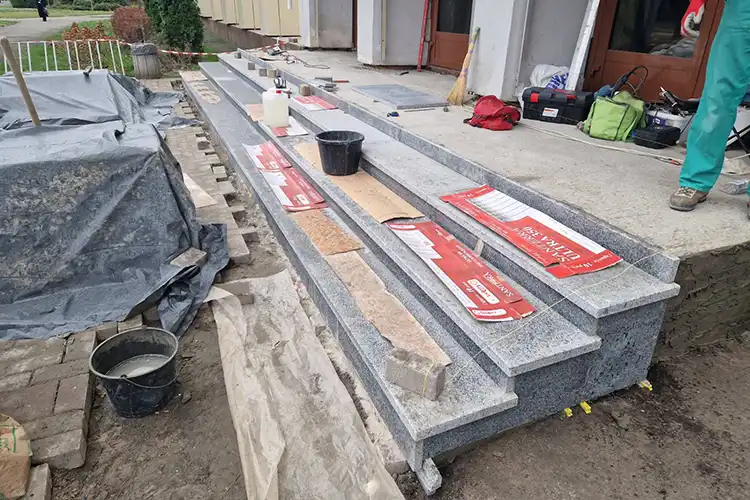Granite stairs are not only an elegant element of the interior or exterior, but also a practical solution due to the strength and durability of the material. The process of manufacturing such stairs includes several important stages, each of which has its own characteristics. https://www.budgran.com.ua/services/granitni-shody/
Budgran has been manufacturing granite stairs for over 20 years, providing its customers with high quality and reliability. You can order granite stairs by simply calling +38 067 504 54 77.
In this article, we will take a look at the main steps in the manufacture of granite stairs and what to consider when creating them.
Step 1: Choosing Granite
The first and most important step is to choose the right type of granite. There are many varieties of this stone that differ in color, texture, strength, and other characteristics. It is important to consider not only aesthetic preferences but also technical parameters. For example, for outdoor stairs, it is better to choose heat-treated granite, which has excellent anti-slip properties.
Step 2: Project Development
Project development includes the creation of detailed drawings and calculations that help determine the dimensions of the stairs, the number and shape of steps, their slope and height. At this stage, the location of the staircase, the load it will withstand, and the installation features are also taken into account.
Step 3: Granite Processing
Granite comes in the form of large blocks that need to be processed. Processing includes several stages:
- Sawing: Granite is sawn into slabs of a certain thickness. Special diamond-coated saws are used for this purpose.
- Grinding and polishing: After sawing, the slabs are ground and polished to the desired degree of smoothness. Polishing gives the stone a shine and emphasizes its natural beauty.
- Cutting steps: The processed slabs are cut into individual steps according to the project. It is important to ensure the accuracy of the cutting so that all the steps are perfectly flat and match each other.
Step 4: Final Processing
At this stage, the edges of the steps are processed (e.g., chamfering, rounding) and anti-slip notches are applied, if necessary. This is especially important for outdoor stairs, where slippery surfaces can be dangerous.
Step 5: Installation of Granite Stairs
Installation of granite stairs is the final stage that requires special precision and skill. It is important to properly prepare the base on which the stairs will be installed to avoid displacement or unevenness. Granite steps are fixed with a special adhesive or cement mortar, which ensures the strength and durability of the structure.
Step 6: Finishing work
After the stairs are installed, the quality of installation is checked, the surface is leveled, and the joints are grouted. At the last stage, protective agents can be applied to increase the resistance of granite to dirt and extend its service life.
Advantages of granite stairs
Granite stairs have a number of undeniable advantages:
- Durability: Granite is known for its high strength and resistance to wear and tear.
- Aesthetics: Granite stairs look luxurious and add elegance to any interior or exterior.
- Easy maintenance: Granite is easy to clean and does not require complicated maintenance.
- Resistance to weather conditions: This makes granite an ideal material for outdoor stairs.
Conclusion
The production of granite stairs is a complex and multi-stage process that requires a professional approach and compliance with technological standards. However, the end result is worth all the effort, because granite stairs are not only aesthetic, but also an extremely reliable element of the building that will serve for decades.




